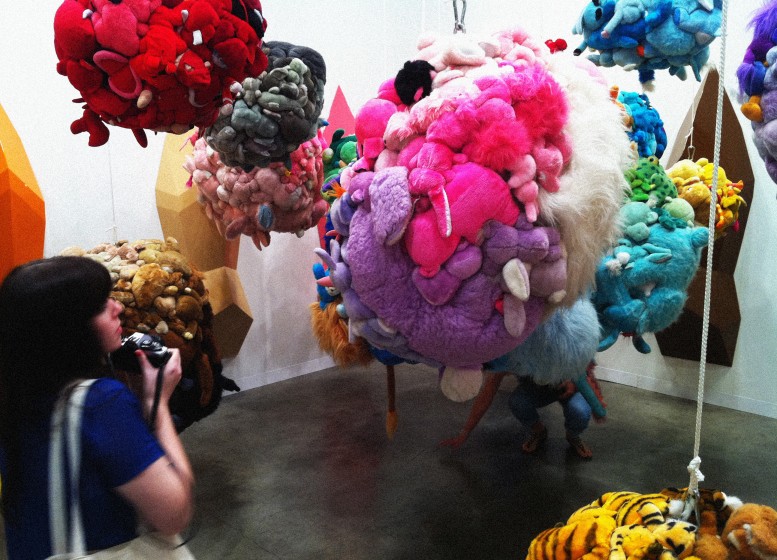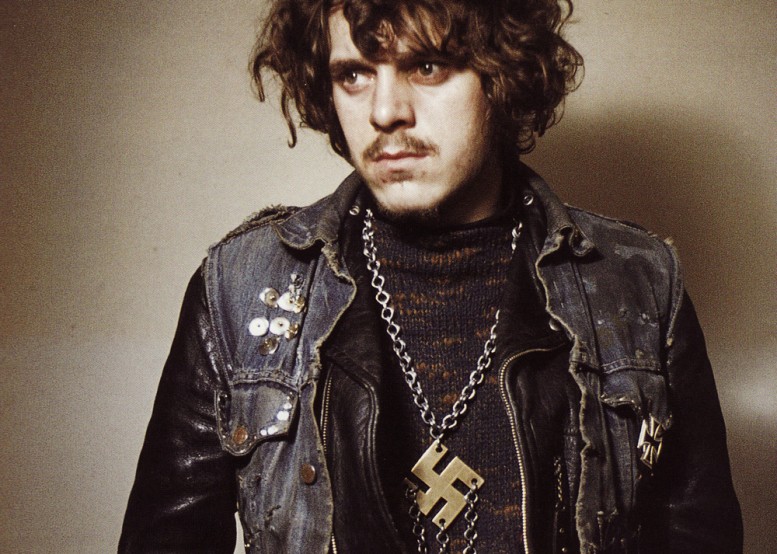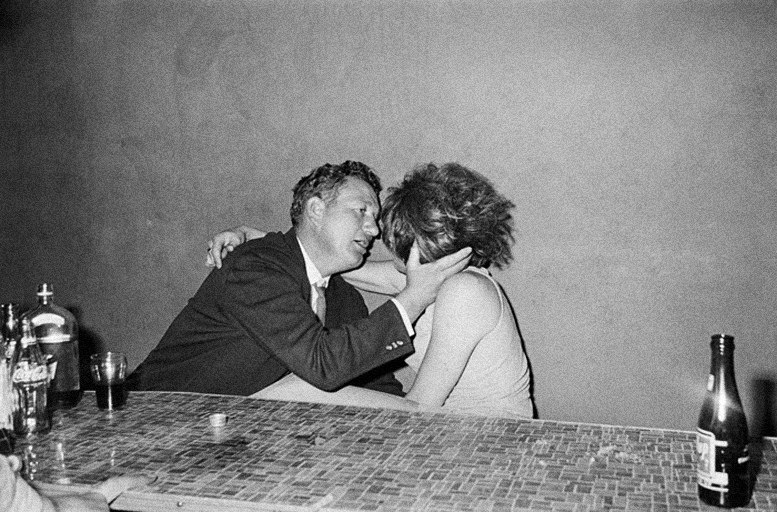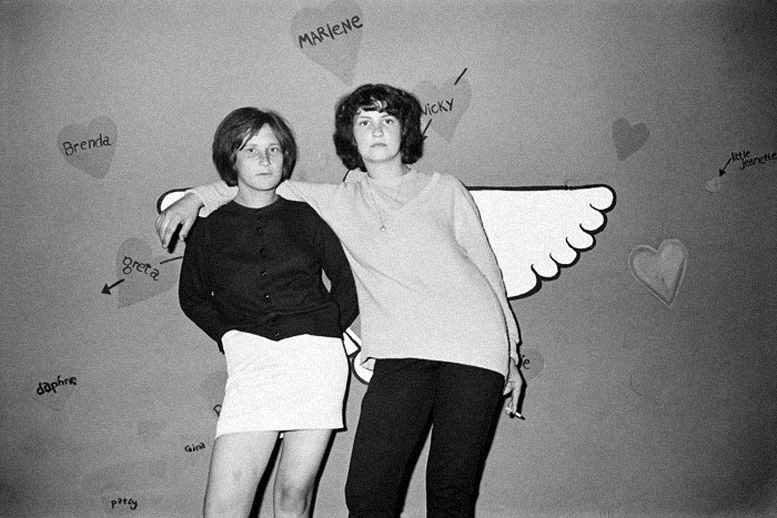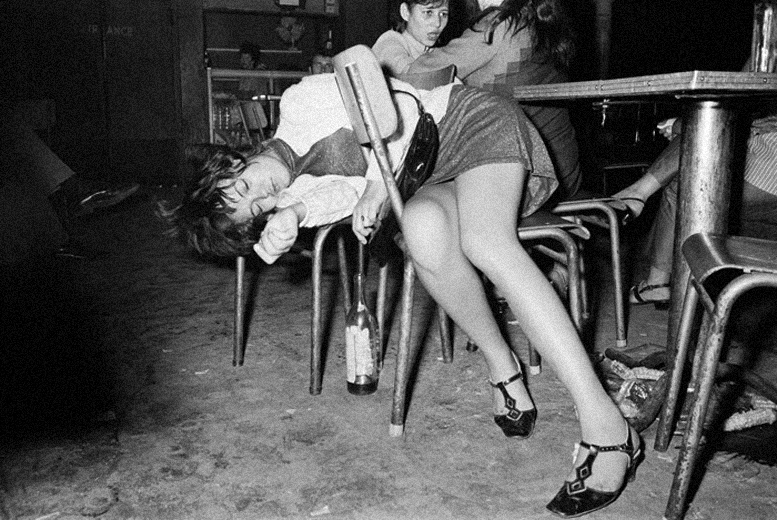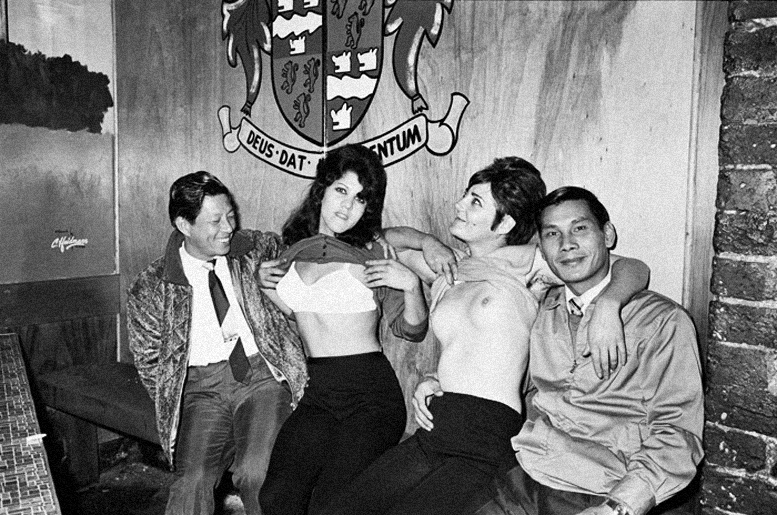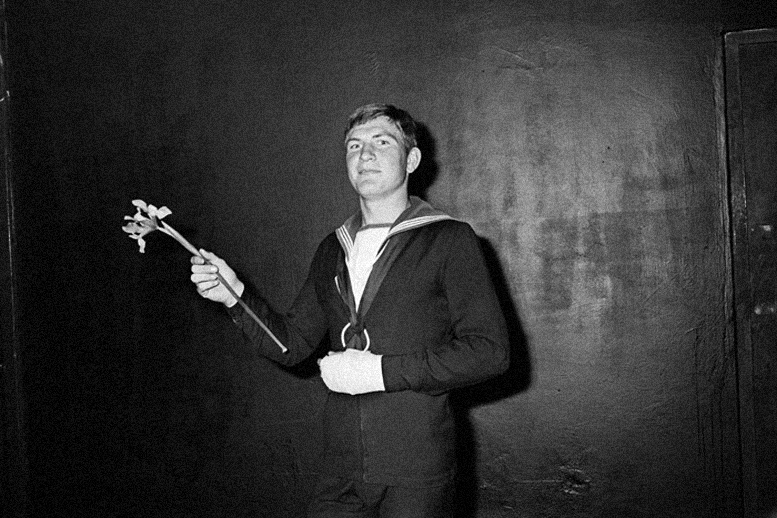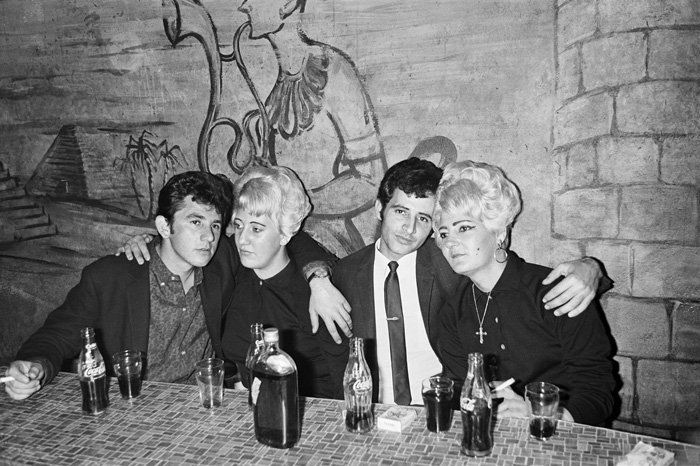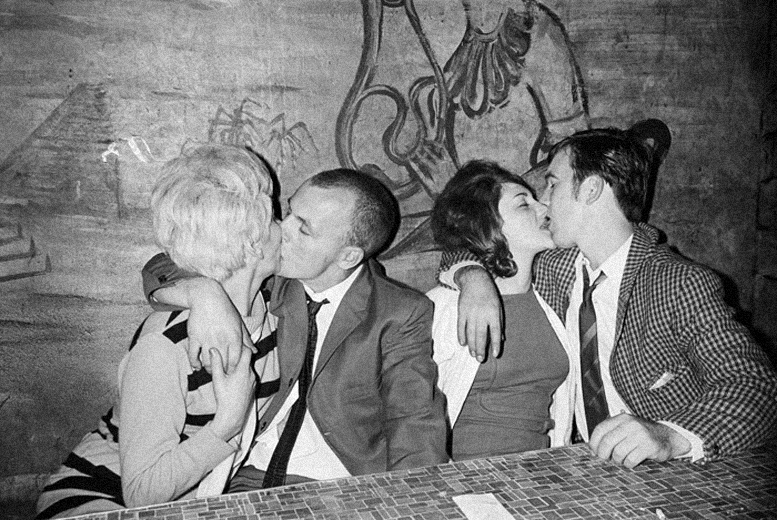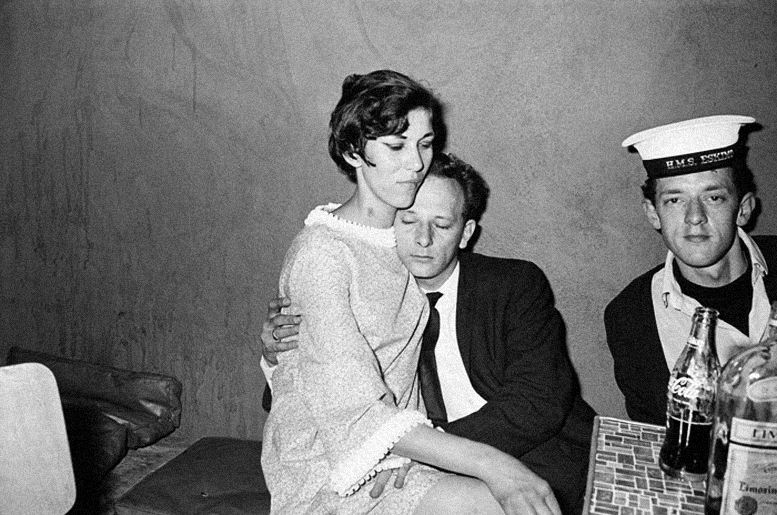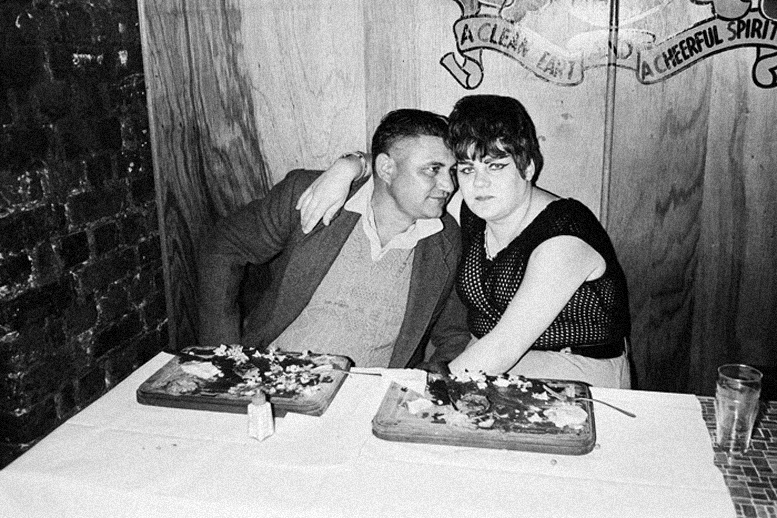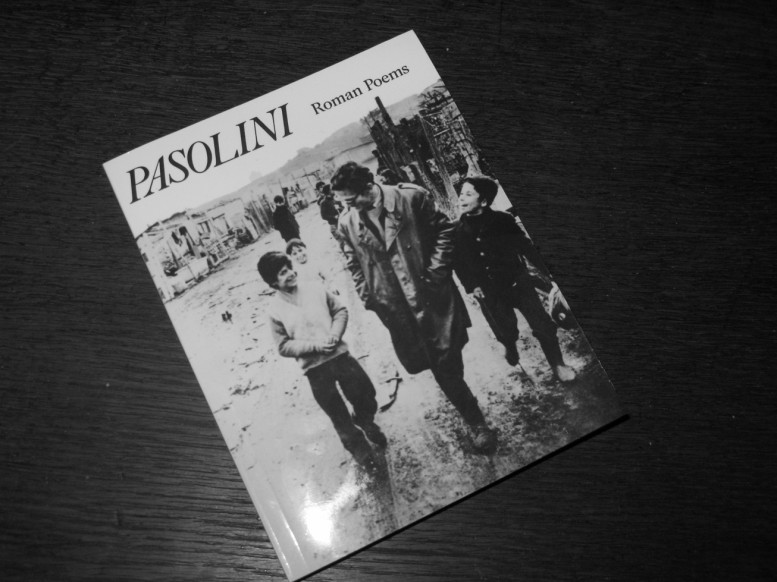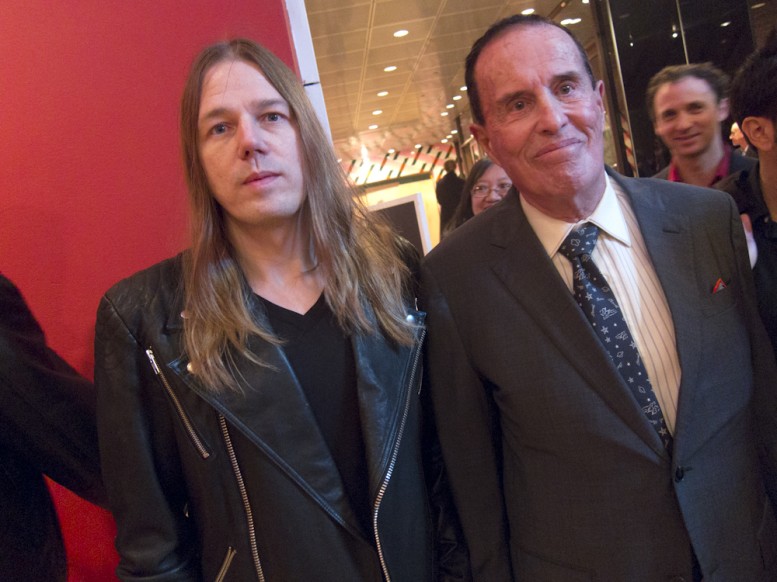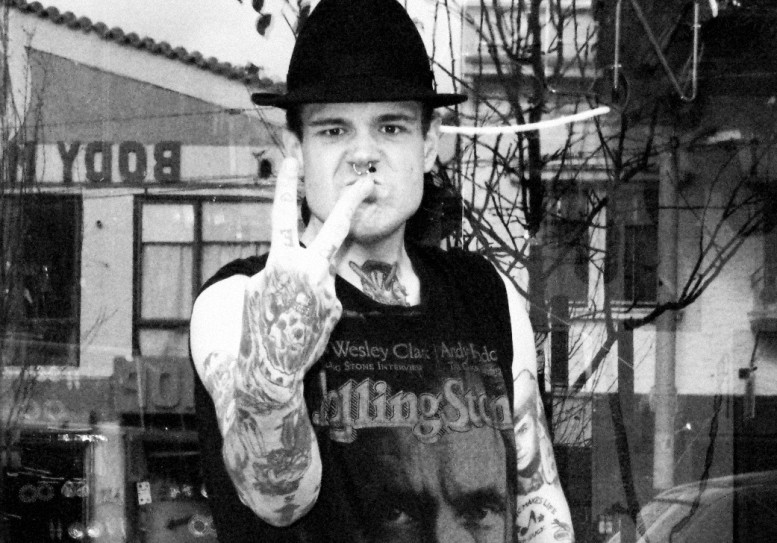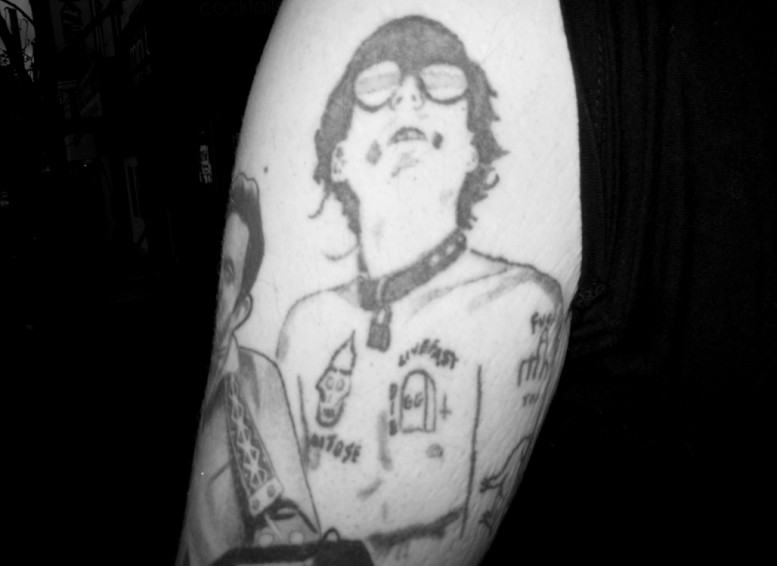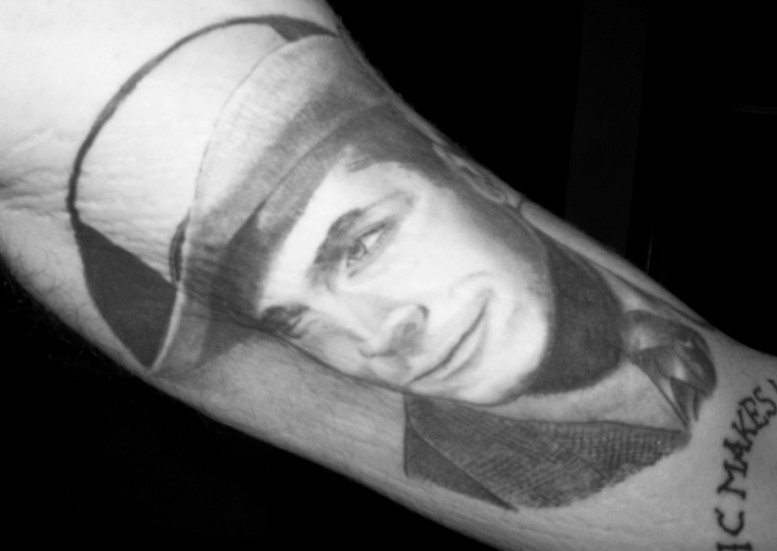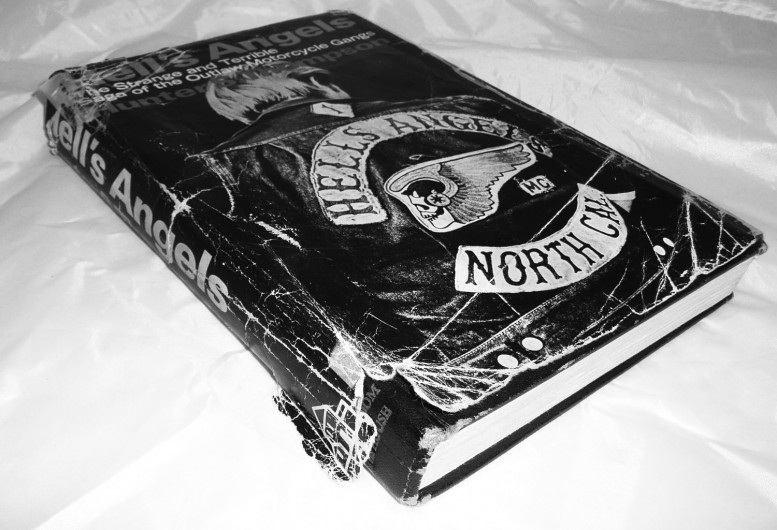 First edition of Hunter Thompson's first book Hells Angels.
First edition of Hunter Thompson's first book Hells Angels.
Mike Kelley Dead From Apparent Suicide
Pictured above, Abbey Meaker photographs a piece by Mike Kelley at Art Basel Miami last December. Mike Kelley, who has reportedly ended his own life at 57 years old, was an artist with an outsider spirit who found himself not only on the inside of the art world, but on the top, and found it too hard a cross to bear. Kelley's work involved found objects, textile banners, drawings, assemblage, collage, performance and video. He often worked collaboratively and had done projects with artists Paul McCarthy, Tony Oursler and John Miller. Kelley was often associated with the concept of abjection, "the state of being cast off." Photograph by Natalia Vuley.
John Cage Turns 100
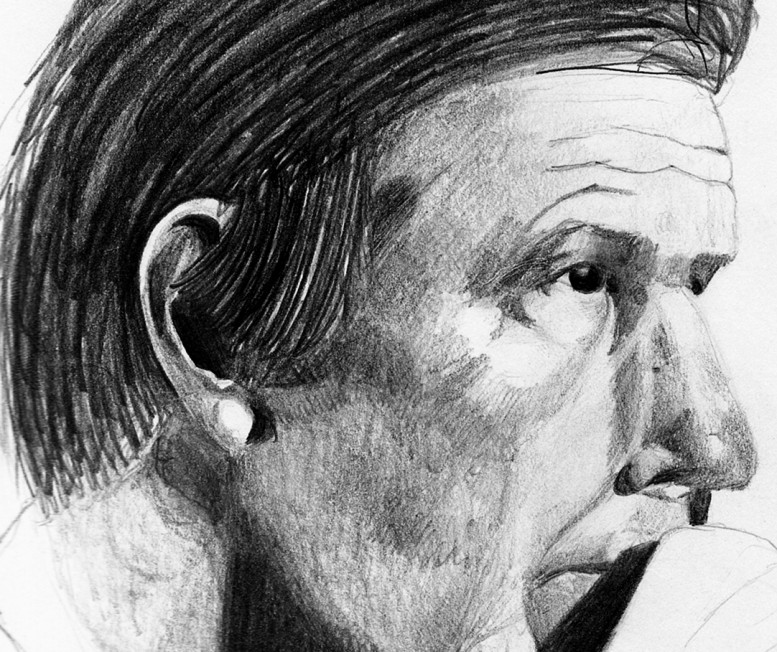 Art by Daniel B. Sierra
Art by Daniel B. Sierra
American composer, music theorist, writer, philosopher and artist John Cage, who died in 1992, would have been 100 this year and there are a slew of events to celebrate the centenary – including EVERYDAYJOHNCAGE in the city of Rimini, Italy where every single day of 2012 from January 1st to December 31st a viral system distributes publicly and privately, fragments and materials related to John Cage, and an exhibition entitled Things Not Seen Before: A Tribute to John Cage, a visual art exhibition at Tempus Projects, organized by Independent Curator Jade Dellinger. Inspired by a line from a letter the curator (as a student – in the late 1980’s) received from the late, great composer concerning the work of Marcel Duchamp, Cage noted: “I am not interested in the names of movements but rather in seeing and making things not seen before.” Visit www.johncage.org to see all events.
Juergen Teller in New York
Presented in three parts, an upcoming exhibition at Lehman Maupin Gallery in New York, highlights three recent series, demonstrating Teller’s dynamic and diverse oeuvre. Featuring the controversial photographs of Kristen McMenamy and seductive portraits of Vivienne Westwood, juxtaposed with intimate portraits of his family and close friends, this exhibition displays an amalgam of subjects and personalities. The exhibition starts with Teller’s controversial series of photographs featuring Kristen McMenamy, shot in the home of Carlos Mollino. Drawing inspiration from the eccentric architect, Teller recalls Mollino’s fascination with the erotic, capturing McMenamy in provocative poses. Although the series garnered controversy for its alleged “pornographic” nature, it demonstrates Teller’s skilled storytelling and fearless approach to his medium. On view from February 10 to March 17, 2012 at the Lehman Maupin Gallery, 201 Chrystie Street, New York.
Intimate Stranger
Intimate Stranger, an exhibition on view now Kunstmuseum Basel, presenting the body of work of photographer Karlheinz Weinberger, is rarely on public display. Shown together with magazines and a selection of vintage fashion, these pictures document a bygone youth culture in Zurich. The movement emerged after World War II, driven by the desire to undermine prevailing notions of "Swiss propriety." For most of his life, Weinberger worked in a warehouse at Siemens-Albis, Zurich. A self-taught photographer, he dedicated his free time to this art, portraying his lovers and other people he met in the street. Starting in the late 1940s, he frequently published his pictures in Der Kreis, a homosexual magazine that garnered international attention, signing his work with the pseudonym "Jim." In 1958, he launched a major project, for which he would follow a gang of "Halbstarke" (half strong) for an extended period of time. Intimate Stranger is on view until April 15, 2012 at the Kunstmuseum, Basel – Sankt Alban-Graben 16 4051 Basle, Switzerland.
Billy Monk's Nightclub Photography
A new book is available of Billy Monk's nightclub photography. Billy Monk worked as a bouncer in the notorious Catacombs club in the dock area of Cape Town, South Africa, during the 1960s. He originally began taking pictures in the club with the intention of selling the photographs to the customers – the people he was photographing. His aim was not to make a social statement, but his money-making scheme quickly turned into something else as he increasingly captured the raw energy of the club, its decadence and tragedy, its humanity and joy. As someone who shared the experiences of those club-goers he was trusted by them and was able to convey their world and their experience with great energy and honesty. As photographer David Goldblatt has written in the forward: “These are photographs by an insider of insiders for insiders. If inhibitions were lowered by the seemingly vast quantities of brandy and Coke that were imbibed, trust, nevertheless, is powerfully evident. Not simply in the raucous tweaking of bared breasts, or the more guarded but evident ‘togetherness’ of two bearded men, as well as the open flouting of peculiarly South African sanctions such as prohibitions on interracial sex. It is also present in the quiet composure of many of the portraits. People seemed to welcome and even bask in Monk’s attentions.” Monk stopped photographing at the club in 1969. Ten years later his contact sheets and negatives were discovered and in 1982 the work was exhibited at the Market Gallery in Johannesburg. Monk could not make the opening and two weeks later, en route to seeing the show, he became involved in an argument. A fight broke out, Monk was fatally shot in the chest and never saw his work exhibited. The book, Billy Monk: Nightclub Photographs, is now available.
Ai Weiwei: Interlacing
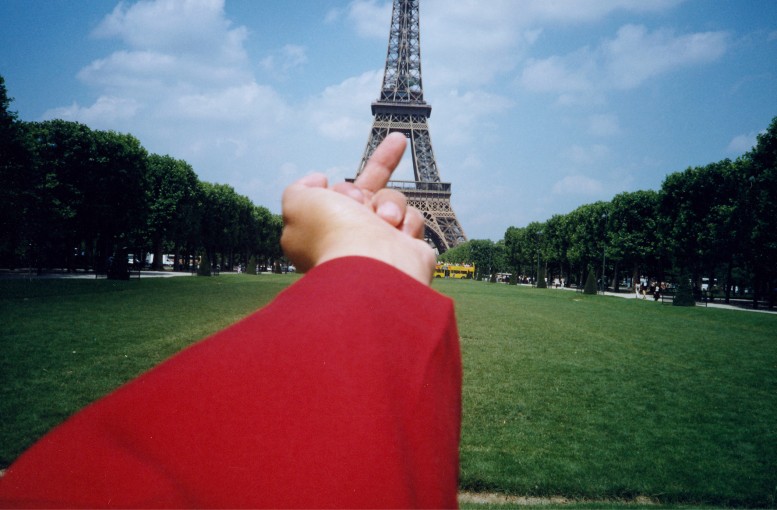
Ai Weiwei – Interlacing is the first major exhibition of photographs and videos by Ai Weiwei. It foregrounds Ai Weiwei the communicator – the documenting, analyzing, interweaving artist who communicates via many channels. Ai Weiwei already used photography in his New York years, but especially since his return to Beijing, he has incessantly documented the everyday urban and social realities in China, discussing it over blogs and Twitter. Photographs of radical urban transformation, of the search for earthquake victims, and the destruction of his Shanghai studio are presented together with his art photography projects, the Documenta project Fairytale, the countless blog and cell phone photographs. A comprehensive book
Diane Arbus: A Chronology
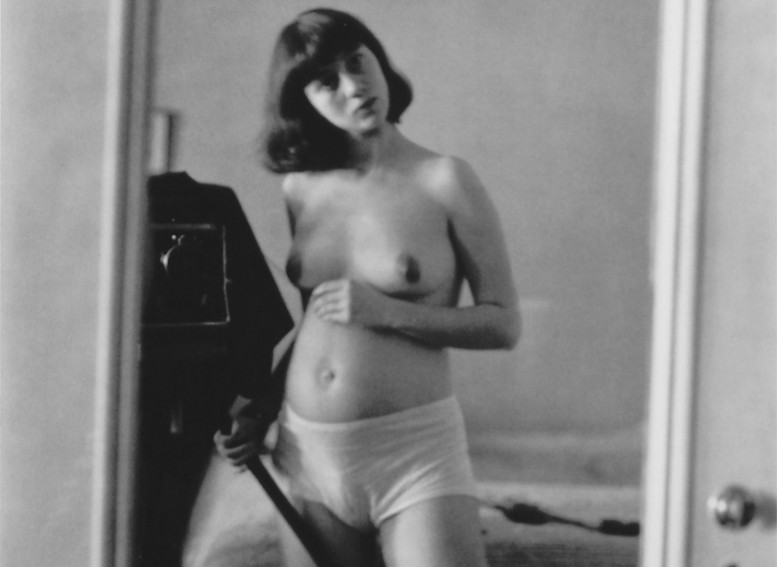
Diane Arbus: A Chronology

McQueen Motorcycles to Vegas Auction
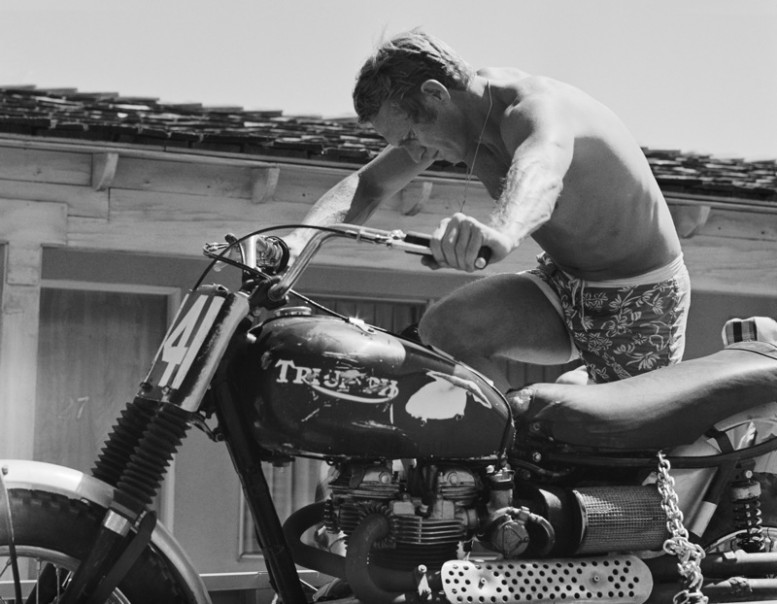
Steve McQueen motorcycles are up for auction at the 21st Annual Las Vegas Motorcycle Auction and Races at the South Point Hotel & Casino Jan. 12-14 in Las Vegas. Not only will two of McQueen's classic motorcycles (1938 Triumph Speed Twin and 1940 Indian Four Cylinder) and a personal Bell (1970) helmet be on the block for the MidAmerica Auctions, but his widow, Barbara McQueen, will be serving as the guest of honor.
The Sea is My Brother
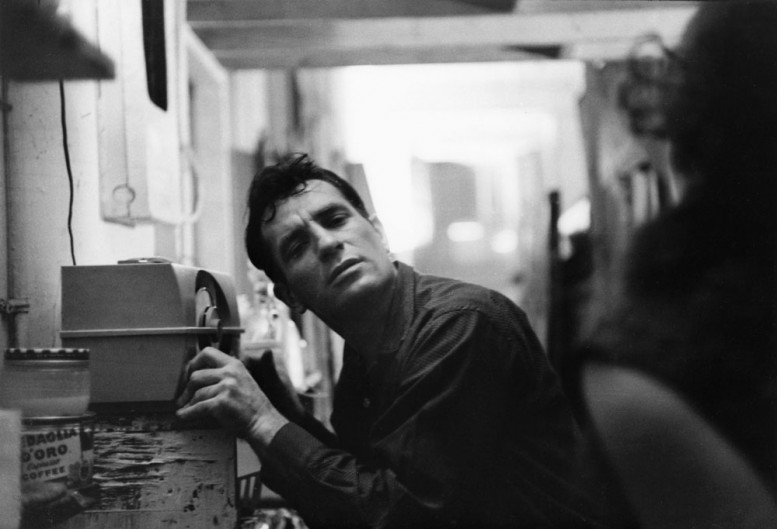 Jack Kerouac's recently discovered novel The Sea is My Brother
Jack Kerouac's recently discovered novel The Sea is My Brother
Armed
Jennifer Mulhare shooting guns in Florida.
Roman Poems
Roman Poems by Pier Paolo Pasolini, published by City Lights Books. A much-appreciated gift from Dustin Lynn.
Conversations with David Hockney
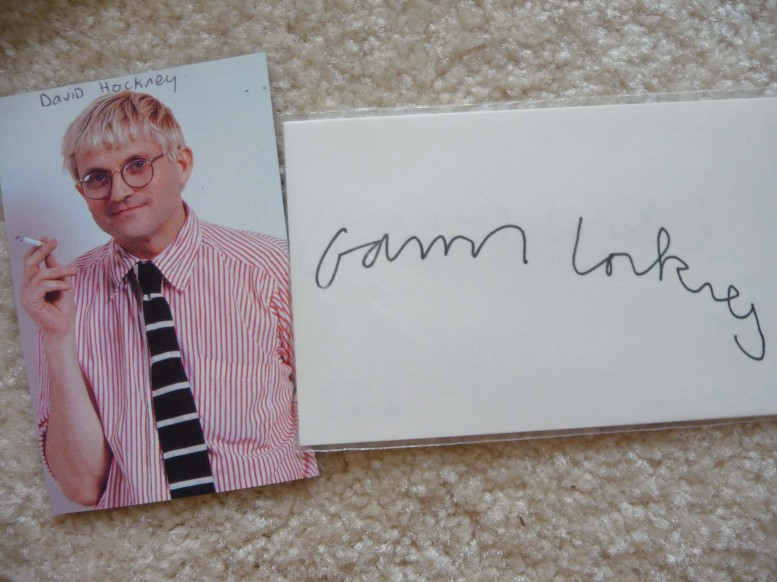
Sparky, illuminating and entertaining – a decade’s worth of conversations between David Hockney and art critic Martin Gayford that explore via anecdote, reflection, passion and humour the very nature of creativity.David Hockney is possibly the world’s most popular living painter, but he is also something else: an incisive and original thinker on art. Here are the fruits of his lifelong meditations on the problems and paradoxes of representing a three-dimensional world on a flat surface. How does drawing make one ‘see things clearer, and clearer, and clearer still’, as Hockney suggests? What significance do different media – from a Lascaux cave wall to an iPad – have for the way we see? What is the relationship between the images we make and the reality around us? How have changes in technology affected the way artists depict the world? A Bigger Message: Conversations with David Hockney is out now on Thames & Hudson.
Kenneth Anger-Icons Opening
Brian Butler & Kenneth Anger at the opening of Kenneth Anger: ICONS exhibit at MoCA Los Angeles. Photograph by Brad Elterman.
Jeanne Moreau: Enduring Allure
“I write my own rules day by day,” Jeanne Moreau once said, and few actresses of her generation can claim to have rewritten the rules of film stardom with as much conviction. After her provocative performance in Louis Malle’s The Lovers (1958), Moreau (b. 1928) was touted as the next Brigitte Bardot, but she was always something more than an object of desire. Whether cool and cunning or frank and free-spirited, each of her characters projects a worldly intelligence; behind her heavily shadowed eyes are depths of private knowledge. As she has said, “Beyond the beauty, the sex, the titillation, the surface, there is a human being. And that has to emerge.” An accomplished stage performer who had appeared in a few B movies, Moreau was nearly thirty when Malle persuaded her to star in his first feature, Elevator to the Gallows (1958). “It was,” she later said, “the decisive moment for the rest of my life.” By the time she played the captivating Catherine in François Truffaut’s Jules and Jim (1961), she was at the crest of the New Wave. Moreau’s talent drew the attention of many major directors: Michelangelo Antonioni, Luis Buñuel, Jacques Demy, Orson Welles. All of these artists are indebted to a woman whom Welles, with his usual combination of hyperbole and insight, called “the greatest actress in the world.” Text by Juliet Clark. Jeanne Moreau: Enduring Allure is currently on view until December 11 at the Pacific Film Archive at the University of Berkley.

